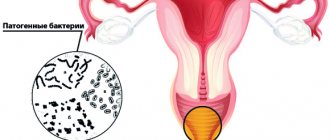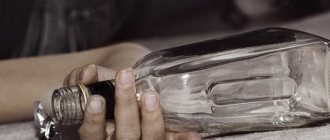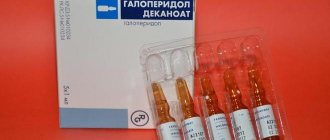- October 14, 2018
- Infectious
- Ksenia Fed
Bacterial vaginosis is an extremely unpleasant disease that is accompanied by a lot of unpleasant symptoms, including heavy discharge, itching and a characteristic odor. After its detection, it is necessary to immediately begin treatment of the pathology in order to prevent the development of complications. On the pharmaceutical market you can find many drugs that in a short time can save a woman from this unpleasant illness. But which one should you choose?
Effective Dalatsin suppositories are popular among patients. Instructions for use of this medicine will be discussed in the article. We will tell you in more detail about the composition and form of release, main indications and contraindications, as well as about drug analogues and reviews of patients who have already been treated with these suppositories.
Release form and composition
Dalatsin suppositories are vaginal. They are torpedo-shaped, so they can be inserted quickly and painlessly. They are quite hard and dense, and their surface is absolutely smooth. The color of the suppositories is white. They have no distinct odor.
The active ingredient of the drug is the antibiotic clindamycin in the form of phosphate, which belongs to the group of lincosamides. One suppository contains 100 mg of this component. This drug also contains solid fat as an auxiliary component. For the convenience of patients, the candles are pre-packaged in strips made of laminated foil. Each of them contains 3 suppositories. The strips themselves are packaged in cardboard boxes, in which they are sold at the pharmacy. Included with them you can also purchase an applicator for convenient insertion of suppositories into the vagina. The cost of one package starts from 750 rubles. The exact price will depend on the region of purchase. The shelf life of the drug is 3 years. These candles should be stored in a cool place, but freezing them is strictly prohibited.
Dalatsin
Active substance:
Clindamycin*
Pharmgroup:
Lincosamides
Average price in pharmacies
| Name | Manufacturer | average price |
| Dalatsin 0.1 n3 supp vag | Pharmacy and Upjohn Company LLC | 750.00 |
| Dalatsin 1% 30.0 gel | Pharmacy and Upjohn Company LLC | 1003.00 |
| Dalatsin 2% 20.0 cream vag n1tube+3 applicate | Pharmacy and Upjohn Company LLC | 745.00 |
| Dalacin 2% 40.0 cream vag n1tube+7 applicate | Pharmacy and Upjohn Company LLC | 864.00 |
Analogs for the active substance:Dalacin C phosphate Zerkalin Klimitsin Clindamycin Clindamycin phosphate Klindafer Clindacin Clindes Klindovit | Application area:Bacterial vaginitis Bacterial vaginosis Bacterial vaginitis Bacterial vaginosis Vaginitis Bacterial vaginitis Inflammatory diseases of the vagina and vulva Inflammatory diseases of the female genitalia Inflammatory diseases of the female genital organs Vulvitis Vulvovaginal infections Vulvovaginitis Atrophic vulvovaginitis Bacterial vulvovaginitis Estrogen deficiency vulvovaginitis Vulvovaginitis Gardnerellosis Fungal vulvovaginitis in girls and virgins Vaginal infection Genital infection Colpitis Violation of the purity of vaginal secretions Nonspecific cervicovaginitis Nonspecific vulvitis Nonspecific vulvovaginitis Nonspecific colpitis Recurrent nonspecific bacterial vaginosis Senile colpitis Mixed vaginal infections Mixed colpitis Chronic vaginitis |
Main indications for the use of Dalatsin suppositories
This drug is antibacterial. It belongs to the group of lincosamides, which are used exclusively for topical use. These suppositories are recommended for use only for the treatment of bacterial vaginosis. This infectious disease occurs when a woman’s body lacks lactoflora and is replaced by pathogenic bacteria. It is in order to get rid of them that doctors prescribe this drug.
Do Dalatsin suppositories have indications for use that are not related to bacterial vaginosis? No, it is not recommended to use suppositories for other pathologies, as the body can develop resistance to bacteria. And in the future the drug may be ineffective. You can buy suppositories in pharmacies only with a prescription from your doctor, so before starting therapy you should contact him for advice. Willful and uncontrolled treatment can aggravate the course of the pathology.
Directions for use and dosage
Dalacin in capsule form is taken orally. To avoid complications, it is recommended to use it strictly as prescribed by your doctor.
To avoid irritation of the esophageal mucosa, capsules should be taken with a full glass of water.
The drug is usually taken:
- Adults: 600-1800 mg per day, frequency of administration – 2-4 times (in equal doses);
- Children: 8-25 mg/kg body weight per day, frequency of administration – 3-4 times (in equal doses).
In the treatment of infections caused by beta-hemolytic streptococcus, Dalacin is used in the doses described above. The duration of the therapeutic course is at least 10 days.
Treatment of infectious and inflammatory diseases of the pelvic organs begins with intravenous administration of clindamycin, at a dose of 900 mg every 8 hours, simultaneously with a suitable antibacterial agent for at least 4 days. After the patient’s condition improves, therapy is continued for at least 2 more days, after which Dalatsin is prescribed in the form of capsules in a single dose of 450-600 mg. The drug is taken daily every 6 hours. The full course of treatment is 10-14 days.
Depending on the indications, Dalacin is prescribed:
- Toxoplasmosis encephalitis in patients with AIDS: in case of intolerance to standard therapy, the drug is taken simultaneously with pyrimethamine according to the following regimen: Dalacin - 600-1200 mg every 6 hours for 14 days, then 300-600 mg with the same frequency of application; pyrimethamine – 25-75 mg daily. As a rule, the treatment course is 8-10 weeks. When using pyrimethamine in higher doses, 10-20 mg of folic acid per day should be prescribed;
- Cervical infections caused by Chlamydia trachomatis: 450-600 mg daily, dosage frequency – 4 times a day, duration of therapy – 10-14 days;
- Acute streptococcal pharyngitis/tonsillitis: for 10 days, 300 mg 2 times a day;
- Pneumocystis pneumonia in patients with AIDS: for 21 days, 300-450 mg every 6 hours simultaneously with primaquine 15-30 mg once a day;
- Malaria: adults – 10-20 mg/kg per day; children – 10 mg/kg per day. The drug is taken in equal doses every 12 hours, the course duration is 7 days. It is also possible to use Dalatsin simultaneously with quinine (every 12 hours, 12 mg/kg) or chloroquine (every 24 hours, 15-25 mg), the course duration is 3-5 days.
To prevent endocarditis in patients with hypersensitivity to penicillins, Dalatsin is prescribed: adults - 600 mg; children – 20 mg/kg. The drug should be taken 1 hour before minor dental or surgical intervention, or any other procedure in which there is a risk of developing endocarditis.
Elderly patients with normal renal and liver function for a given age, as well as patients with functional disorders of the liver and kidneys, should not adjust the dose.
When treating bacterial vaginosis, the following are usually prescribed:
- Vaginal cream: 5000 mg of cream (1 full applicator, approximately 100 mg of clindamycin) should be inserted into the vagina. The procedure is best done before bedtime. Course duration – 3 or 7 days;
- Vaginal suppositories: 1 suppository is administered intravaginally 1 time per day, preferably before bedtime. Course duration – 3 days.
Dalacin in the form of a gel is used externally in the treatment of acne vulgaris. The drug is applied in a thin layer to the affected area (dry, clean skin). Frequency of application – 2 times a day. The recommended course duration is 6-8 weeks. According to indications, Dalacin can be used for 6 months. If after using the gel for several months the effectiveness of treatment decreases, you need to take a break for 4 weeks.
Who should not use candles?
This drug is a safe and effective remedy, but not all patients can use it. The instructions for Dalatsin suppositories contain a list of contraindications for which they should not be used. First of all, it is not recommended to use suppositories for underage girls. There have not been enough complete studies of the drug, so doctors do not have data on the effect of the active substance on the growing body of girls. Therefore, they need to select more gentle means that are appropriate for their age.
In addition, suppositories should not be used by patients who suffer from hypersensitivity to clindamycin or other components included in the suppositories. In this case, taking them may cause allergic reactions.
Antibiotic-associated colitis is another contraindication in which the patient will have to choose another drug. This is the name for infectious inflammation of the colon. This pathology appears after taking antibacterial drugs, including those containing clindamycin, so using suppositories will only worsen the woman’s condition.
Drug interactions
Clindamycin should not be taken orally at the same time as erythromycin and chloramphenicol.
There is cross-resistance of microorganisms to lincomycin and clindamycin.
Clindamycin should be used with caution in patients receiving other peripherally acting muscle relaxants.
With the simultaneous use of Dalacin orally with opioid (narcotic) analgesics that have a central inhibitory effect on respiratory function, more pronounced respiratory depression may develop, up to apnea.
The risk of developing pseudomembranous colitis increases with simultaneous use of Dalacin with antidiarrheal drugs that reduce gastrointestinal motility.
The spectrum of antimicrobial action of clindamycin is expanded by aminoglycosides.
The simultaneous use of vaginal cream and suppositories with other drugs for intravaginal administration is not recommended.
Candles "Dalacin": instructions for use
As a rule, when prescribing dosage, doctors adhere to the standard treatment regimen. One package contains 3 suppositories, which are enough to completely cure bacterial vaginosis. Thus, the therapeutic course usually lasts only 3 days. The suppositories must be inserted into the vagina, having first thoroughly cleaned it of the characteristic white clots. It is best to use candles before bed.
How to properly administer suppositories? At the pharmacy, patients can purchase a package containing a special applicator that facilitates administration. First, you need to remove the candle from the foil with clean hands. Then its flat end must be placed in the hole of the applicator. For ease of insertion, the woman should lie on her back with her knees pulled up to her stomach. In this position, the patient inserts the applicator deeply into the vagina with her free hand. At the same time, you need to hold it by the ribbed end. Then you need to slowly press a special piston, which will push the candle deep into the vagina. After this, the applicator can be removed. Before the next use, it is recommended to wash it thoroughly in soapy water, rinse with warm water and allow to dry completely.
If desired, you can insert the suppository without using an applicator. To do this, the woman also lies on her back, pressing her knees to her chest. Then, using your middle finger, you need to insert the suppository as deep as possible into the vagina.
special instructions
If diarrhea develops after using Dalatsin orally or intravaginally, the possibility of developing pseudomembranous colitis should be considered. The disease may also appear 2-3 weeks after cessation of therapy. Its main symptoms include: diarrhea, leukocytosis, fever, abdominal pain (sometimes accompanied by mucus and blood in the stool). If necessary, diagnostic and therapeutic measures should be carried out. When using the drug externally, cases of colitis are rare, however, caution must be exercised and, in the event of prolonged or severe diarrhea, the use of the gel should be discontinued.
For cervical infections caused by Chlamydia trachomatis, monotherapy with Dalatsin in capsule form is effective for complete cure.
When taking Dalatsin orally, excessive growth of microorganisms insensitive to the drug, especially yeast-like fungi, is possible. In the event of superinfection, appropriate measures must be taken depending on the clinical situation.
Clindamycin should not be prescribed for the treatment of meningitis.
When prescribing Dalatsin in high doses, it is necessary to monitor the concentration of clindamycin in plasma. With long-term therapy, kidney and liver function tests should be performed regularly.
Before prescribing Dalatsin for the treatment of vulvovaginitis, the following possible causative agents should be excluded: Chlamydia trachomatis, Trichomonas vaginalis, Candida albicans, Neisseria gonorrhoeae and the Herpes simplex virus.
It must be taken into account that intravaginal use of the drug can cause increased growth of microorganisms that are insensitive to its action, especially yeast-like fungi.
When using the drug intravaginally, sexual contact should be avoided, as well as the use of other types of products administered intravaginally (for example, syringes, tampons).
The use of Dalacin in the form of cream or suppositories during menstruation is not recommended. In this case, the start of therapy should be postponed until the end of menstruation.
Dalatsin contains components that affect the strength of rubber or latex products (contraceptive vaginal diaphragms, condoms). The use of such products during therapy and within 3 days after using the drug is not recommended.
Avoid contact of the gel for external use with the mucous membranes of the mouth and eyes. After applying the drug, you must wash your hands thoroughly. If accidental contact occurs with sensitive surfaces (skin abrasions, eyes, mucous membranes), rinse them thoroughly with cool water.
Possible side effects
Treatment with Dalacin suppositories is usually quite easily tolerated by patients. Therefore, women rarely complain about unpleasant side effects. However, they still appear in rare cases. If you feel worse, you should consult a doctor. It may not be necessary to discontinue treatment, but in some cases the drug will have to be replaced.
Patients often complain of the following side effects:
- severe headaches;
- abdominal discomfort and diarrhea, as well as nausea, which may progress to vomiting;
- the skin begins to itch very much, rashes and redness appear;
- pyelonephritis and dysuria from the genitourinary system - these symptoms appear only in rare cases;
- menstrual irregularities;
- the appearance of vaginal infections and uncharacteristic vaginal discharge, and it may also begin to hurt.
Women may also feel discomfort in the area where the drug is administered. As a rule, patients who do not have regular sex life complain about them. In this case, they complain of pain at the injection site, as well as itching, swelling and redness.
Instructions:
Clinical and pharmacological group
23.007 (Antibiotic for topical use in gynecology)
Release form, composition and packaging
Vaginal cream 2% white.
| 1 g | |
| clindamycin (as phosphate) | 20 mg |
Excipients: sorbitan monostearate, polysorbate 60, propylene glycol, stearic acid, cetostearyl alcohol, cetyl palmitate, mineral oil, benzyl alcohol, purified water.
20 g - tubes (1) complete with applicators (3 pcs.) - cardboard packs. 40 g - tubes (1) complete with applicators (7 pcs.) - cardboard packs.
Vaginal suppositories are solid, torpedo-shaped, with a smooth surface, white or almost white.
| 1 sup. | |
| clindamycin (as phosphate) | 100 mg |
Excipients: solid fat (Witepsol H-32, mixture of triglycerides, diglycerides and monoglycerides).
3 pcs. — strips (1) — cardboard packs. 3 pcs. — strips (1) complete with a plastic applicator — cardboard packs.
pharmachologic effect
Antibiotic of the lincosamide group for topical use. The mechanism of action is associated with the suppression of protein synthesis in the microbial cell due to interaction with the 50S ribosomal subunit. Has a bacteriostatic effect; in higher concentrations against some microorganisms it is bactericidal.
The drug is active against microorganisms that cause bacterial vaginosis: Gardnerella vaginalis, Mobiluncus spp., Mycoplasma hominis, Peptostreptococcus spp., Bacteroides spp.
Pharmacokinetics
Suction
After intravaginal administration of vaginal suppositories (100 mg 1 time / day for 3 days), about 30% (6-70%) of the administered dose is absorbed into the systemic circulation, with an AUC of 3.2 mcg x h / ml (0.42-11 mcg x h /ml). Cmax of clindamycin in blood plasma is achieved 5 hours (1-10 hours) after administration of the vaginal suppository and averages 0.27 mcg/ml (0.03-0.67 mcg/ml) on the third day of therapy.
After intravaginal administration of 100 mg of clindamycin in the form of vaginal cream 1 time / day for 7 days, Cmax of clindamycin in the blood plasma is achieved after 10 hours (4-24 hours) and on the first day averages 18 ng / ml (4-47 ng / ml), and on the seventh day - 25 ng/ml (6-61 ng/ml), while systemic absorption is about 5% (0.6-11%) of the administered dose.
In women with bacterial vaginosis, with a similar dosing regimen, about 5% of clindamycin is subject to systemic absorption (with a smaller range of 2-8%), Cmax is achieved 14 hours (4-24 hours) after administration and averages 13 ng/ml on the first day (6-34 ng/ml), and on the seventh day - 16 ng/ml (7-26 ng/ml).
The systemic exposure of clindamycin when administered intravaginally is less pronounced than when administered orally or intravenously.
Removal
T1/2 is 1.5-2.6 hours. Practically does not accumulate.
Dosage
A single dose (1 full applicator /5 g of cream, approximately 100 mg of clindamycin/ or 1 suppository) is inserted into the vagina before bed for 3 consecutive days. The cream can be administered for 7 consecutive days.
Suppositories can be administered without an applicator or with an applicator. After each use, the applicator should be washed with warm water and soap and dried well.
Overdose
At present, no overdose of Dalatsin has been reported.
Symptoms: if the drug is accidentally ingested, the effects that are observed when clindamycin is taken orally may develop.
Treatment: if necessary, carry out symptomatic therapy.
Drug interactions
An antagonistic interaction between clindamycin and erythromycin has been demonstrated in vitro.
It has been established that when used systemically, clindamycin disrupts neuromuscular transmission, so it is possible to enhance the effects of peripherally acting muscle relaxants. This fact should be taken into account if it is necessary to prescribe the latter with Dalatsin.
No interaction was observed in pharmacodynamic, pharmacokinetic or clinical studies of these dosage forms.
Use during pregnancy and lactation
Adequate and controlled studies on the use of the drug in the first trimester of pregnancy have not been conducted. The use of Dalacin in the first trimester of pregnancy is possible only if the expected benefit outweighs the potential risk to the fetus.
When using clindamycin preparations in the second and third trimesters of pregnancy in dosage forms for intravaginal administration, there was no increase in the incidence of congenital anomalies of the fetus. If Dalatsin is used in the second and third trimesters of pregnancy (although no official studies have been conducted on the use of suppositories during pregnancy), then an adverse effect on the fetus seems unlikely.
Currently, there is no data on the excretion of clindamycin into breast milk during intravaginal use of Dalatsin. However, it has been found that when clindamycin is administered orally or parenterally, some of it is found in breast milk. Therefore, when deciding on the possibility of prescribing Dalacin during lactation (breastfeeding), the expected benefit for the mother should be compared with the possible risk for the child.
Side effects
The incidence of the following side effects is less than 10%.
From the reproductive system: irritation of the mucous membrane of the vulva and vagina, pain in the vagina, vaginal discharge, vaginal candidiasis, vulvovaginitis, trichomonas vaginitis, vaginal infections, menstrual irregularities, uterine bleeding, abnormal birth, endometriosis.
From the urinary system: dysuria, urinary tract infections (including pyelonephritis), proteinuria.
From the digestive system: generalized abdominal pain, localized abdominal pain, abdominal cramps, bloating, dyspepsia, nausea, vomiting, diarrhea, constipation, flatulence, bad breath, perversion of taste.
From the side of the central nervous system: dizziness, headache.
Dermatological reactions: rash, itching, maculopapular rash, erythema, skin candidiasis.
Allergic reactions: urticaria.
From the endocrine system: glucosuria, hyperthyroidism.
From the body as a whole: fungal infections, fever, flank pain, back pain, pain in the lower abdomen, generalized pain, bacterial infections, inflammatory edema, upper respiratory tract infections, nosebleeds, abnormal microbiological test results.
Local reactions: itching and pain at the injection site.
Storage conditions and periods
List B. The drug should be stored out of the reach of children at a temperature not exceeding 25°C; do not freeze. The shelf life of vaginal suppositories is 3 years, vaginal cream is 2 years.
Indications
- bacterial vaginosis.
Contraindications
- hypersensitivity to clindamycin or lincomycin, as well as to any components of the drug.
special instructions
Before prescribing the drug, the following possible causative agents of vulvovaginitis should be excluded using special laboratory methods: Trichomonas vaginalis, Chlamydia trachomatis, Neisseria gonorrhoeae, Candida albicans and Herpes simplex virus.
Intravaginal use of Dalatsin can lead to increased growth of microorganisms that are insensitive to the drug, especially yeast-like fungi.
With systemic use of clindamycin (as with almost all antibiotics), severe diarrhea and, in some cases, pseudomembranous colitis may develop. In this regard, if severe or prolonged diarrhea occurs during Dalacin therapy, the drug should be discontinued and, if necessary, diagnostic and therapeutic measures should be taken.
The combined use of Dalatsin with other drugs for intravaginal administration is not recommended.
The patient should be informed that while using vaginal cream and vaginal suppositories, sexual intercourse should be avoided, as well as the use of other types of products intended for intravaginal administration (for example, tampons, douching).
Dalacin in the form of vaginal suppositories and vaginal cream contains components that can reduce the strength of latex or rubber products (condoms, contraceptive vaginal diaphragms). Therefore, the use of such products during treatment with Dalacin in the form of vaginal suppositories and vaginal cream is not recommended.
Conditions for dispensing from pharmacies
The drug is available with a prescription.
Possible overdose and its treatment
As a rule, if you use Dalatsin suppositories one per day, there will definitely not be an overdose. However, in isolated cases, absorption of clindamycin is possible, which can cause some systemic reactions. In this case, patients may complain of severe diarrhea. As a rule, such unpleasant symptoms go away on their own after taking the drug. But if your condition worsens, it is better to seek help from a specialist. He will prescribe symptomatic and supportive therapy, which will alleviate the patient’s condition until the drug is eliminated from the body. If you accidentally administer more than one suppository at a time, you should also consult a doctor.
Which is better: Dalatsin or Klindovit
Dalatsin and Klindovit.
Photo: lososeans.info The drugs are analogues of each other. The active ingredient is Clindamycin. Dalatsin release form: vaginal suppositories, vaginal cream 2%, gel for external use 1% and solution for intravenous and intramuscular administration. Clindovit is produced in the form of a gel for external use. used to treat acne. The choice of one drug or another is up to the doctor!
Klindovit is produced in Russia. Dalatsin is produced in the USA. Clindovit is cheaper in cost than Dalatsin.
Use during pregnancy and lactation
Bacterial vaginosis often develops during pregnancy. To prevent complications from occurring, it is necessary to begin treatment immediately. Doctors have found that the use of Dalacin suppositories in the second and third trimester of pregnancy does not have a negative effect on the growing fetus. As a rule, it is prescribed at this time if the possible benefits of using suppositories are higher than the risks of complications. There have been no studies demonstrating the effect of the active substance on the fetus during the first trimester, so doctors do not recommend prescribing this drug to pregnant women in the early stages unless absolutely necessary.
There is also no data on whether clindamycin is excreted in breast milk if a woman inserts suppositories vaginally. In order not to harm the baby, it is recommended to stop breastfeeding during treatment and switch the child to artificial formula.
Which is better: Dalacin or Clindamycin
Clindamycin.
Photo: lososeans.info Both drugs are analogues of each other. The composition contains the active ingredient: Clindamycin. Dalatsin is produced in the form of vaginal suppositories, vaginal cream 2%, gel for external use 1% and solution for intravenous and intramuscular administration. Release form of Clindamycin: vaginal cream 2%, solution for intravenous and intramuscular administration, capsules. According to the indications, both drugs are the same, except that Dalatsin has a gel form for external use, which is prescribed for the treatment of acne. Dalatsin is an original drug. The medications are prescribed by the doctor!
The country of origin of Dalatsin is the USA. Clindamycin is produced in Russia and Serbia. Dalacin is more expensive than Clindamycin.
Analogues of the drug
Unfortunately, a universal antibacterial drug that helps all women does not yet exist. The body's reaction to the introduction of suppositories is always individual, so these suppositories may not be suitable for some patients. In this case, the doctor must select a drug for them with a similar principle of action. It is not recommended to replace one medicine with another on your own, since each of them has its own contraindications. We list the most popular analogues of Dalatsin candles:
- "Clindacin";
- "Clindamycin";
- "Klindovit";
- "Zerkalin" and some others.
Which is better: Dalacin or Clindacin
Clindacin.
Photo: yandex.ru The drugs are lincosamide antibiotics. The active component of Dalatsin and Clindacin is Clindamycin. Dalatsin is produced in the form of vaginal suppositories, vaginal cream 2%, gel for external use 1% and solution for intravenous and intramuscular administration. Clindacin, in turn, is produced only in the form of vaginal suppositories and vaginal cream (there is a one-component and Clindacin B prolong - a two-component drug). Clindacin suppositories can be purchased at a pharmacy without a doctor's prescription!
Dalatsin is produced in the USA. Clindacin is produced in Russia. In terms of cost, Clindacin is cheaper than Dalatsin.
Positive reviews
Many patients prefer to read reviews of other people who have already been treated with this drug to understand whether this medicine is right for them. It is worth noting that reviews of Dalatsin candles are most often positive, although some women were dissatisfied with their use. As a rule, patients praise the drug for its effectiveness. In three days of use, you can completely get rid of bacterial vaginosis. In this case, the drug usually does not cause side symptoms. Women in the reviews also recommend using an applicator, since it is much more convenient to insert suppositories into the vagina.
Negative reviews
Unfortunately, this drug did not help some women. After the therapy, they were unable to get rid of bacterial vaginosis, so they had to choose another remedy for themselves. Other patients indicated in their reviews that after the introduction of the suppositories they developed a severe headache and cheesy vaginal discharge. They also noticed that their blood pressure had dropped. In addition, patients did not like the high cost of the drug. For 3 candles with an applicator you will have to pay at least 750 rubles.
In this article, we examined in detail the instructions and reviews of Dalatsin candles. Thus, we can say that this is an effective remedy that can cope with bacterial vaginosis in a short time. However, its main disadvantage is its high cost.
Dalacin or Metronidazole
Metronidazole.
Photo: vestvet.ru The drugs are not analogues of each other. Dalacin is a lincosamide antibiotic (active ingredient: Clindamycin). Metronidazole is an antiprotozoal drug with the active ingredient Metronidazole. The drug is prescribed for the following diseases:
- urogenital trichomoniasis (including urethritis, vaginitis);
- nonspecific vaginitis of various etiologies (confirmed by clinical and microbiological data).
For bacterial vaginosis, doctors prescribe a more effective treatment regimen - a combination of Metronidazole and Dalatsin. Dalacin is more expensive than Metronidazole.







